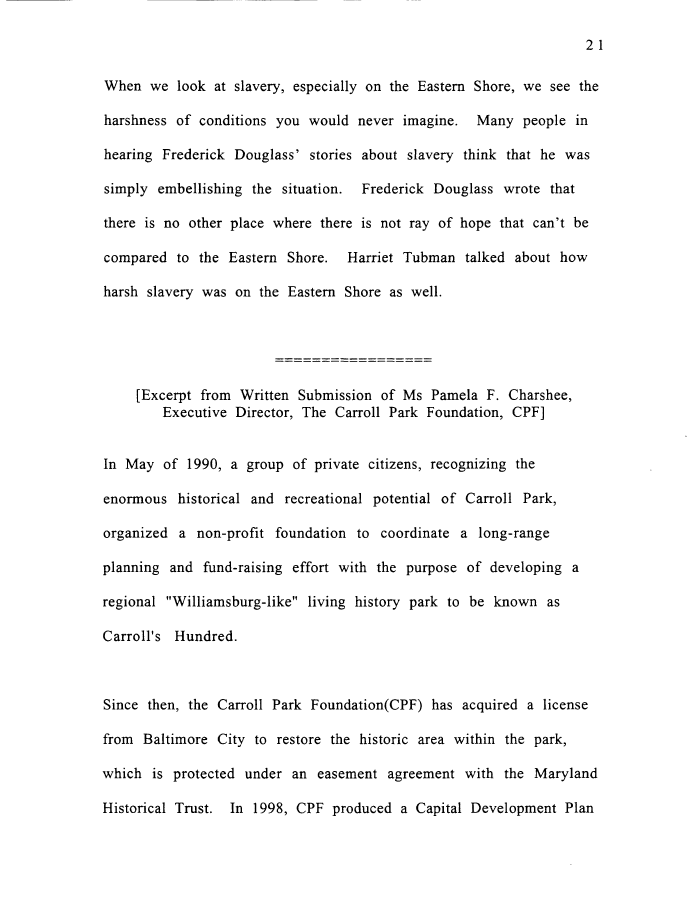 |
||||
|
TASK FORCE TO STUDY THE HISTORY AND LEGACY OF SLAVERY IN MARYLAND (Final Report) 1999/12/31 MdHR 991422 MdHR 991422, Image No: 30 Print image (38K) |
 |
||||
|
TASK FORCE TO STUDY THE HISTORY AND LEGACY OF SLAVERY IN MARYLAND (Final Report) 1999/12/31 MdHR 991422 MdHR 991422, Image No: 30 Print image (38K) |
| 21 When we look at slavery, especially on the Eastern Shore, we see the harshness of conditions you would never imagine. Many people in hearing Frederick Douglass' stories about slavery think that he was simply embellishing the situation. Frederick Douglass wrote that there is no other place where there is not ray of hope that can't be compared to the Eastern Shore. Harriet Tubman talked about how harsh slavery was on the Eastern Shore as well. [Excerpt from Written Submission of Ms Pamela F. Charshee, Executive Director, The Carroll Park Foundation, CPF] In May of 1990, a group of private citizens, recognizing the enormous historical and recreational potential of Carroll Park, organized a non-profit foundation to coordinate a long-range planning and fund-raising effort with the purpose of developing a regional "Williamsburg-like" living history park to be known as Carroll's Hundred. Since then, the Carroll Park Foundation(CPF) has acquired a license from Baltimore City to restore the historic area within the park, which is protected under an easement agreement with the Maryland Historical Trust. In 1998, CPF produced a Capital Development Plan |